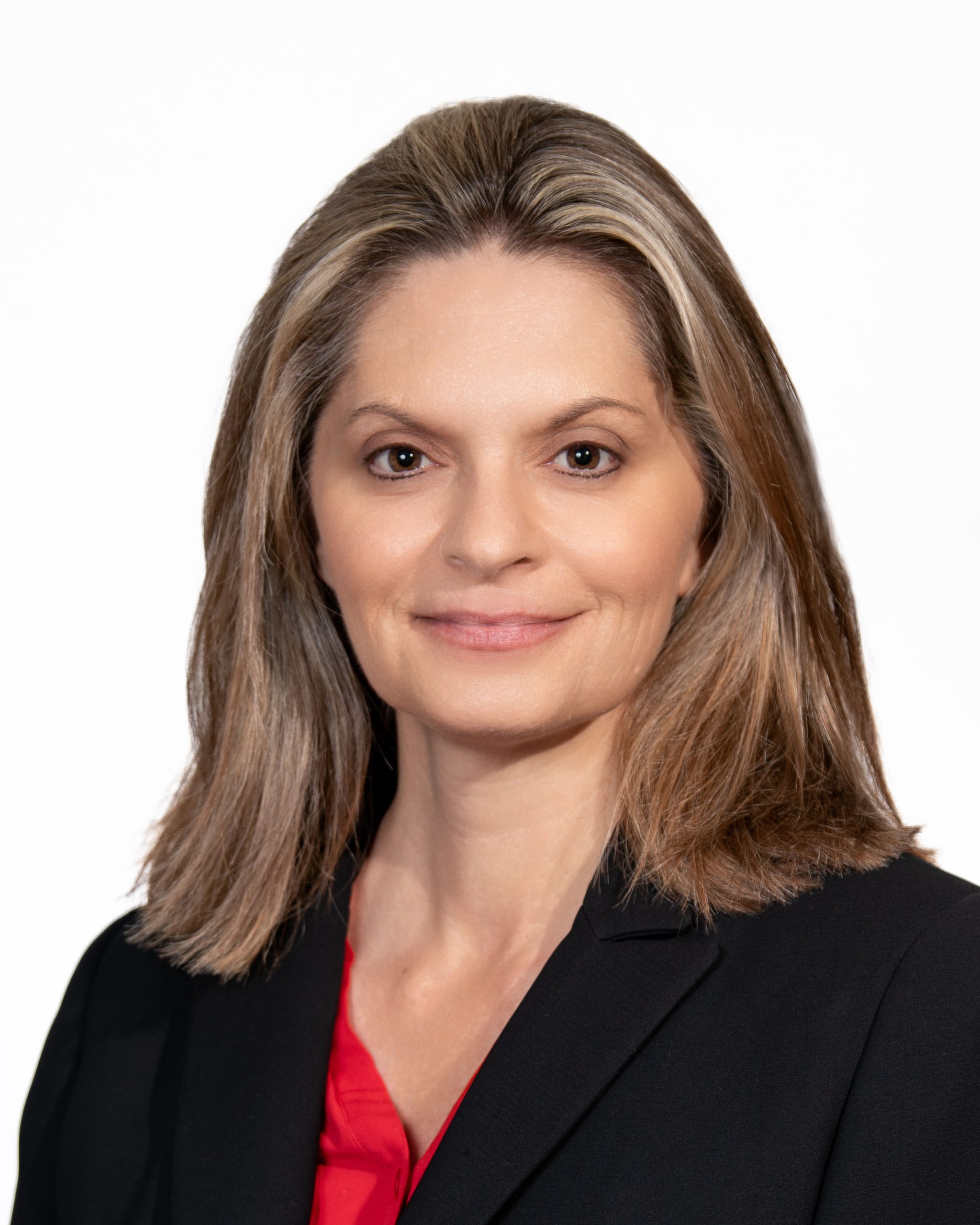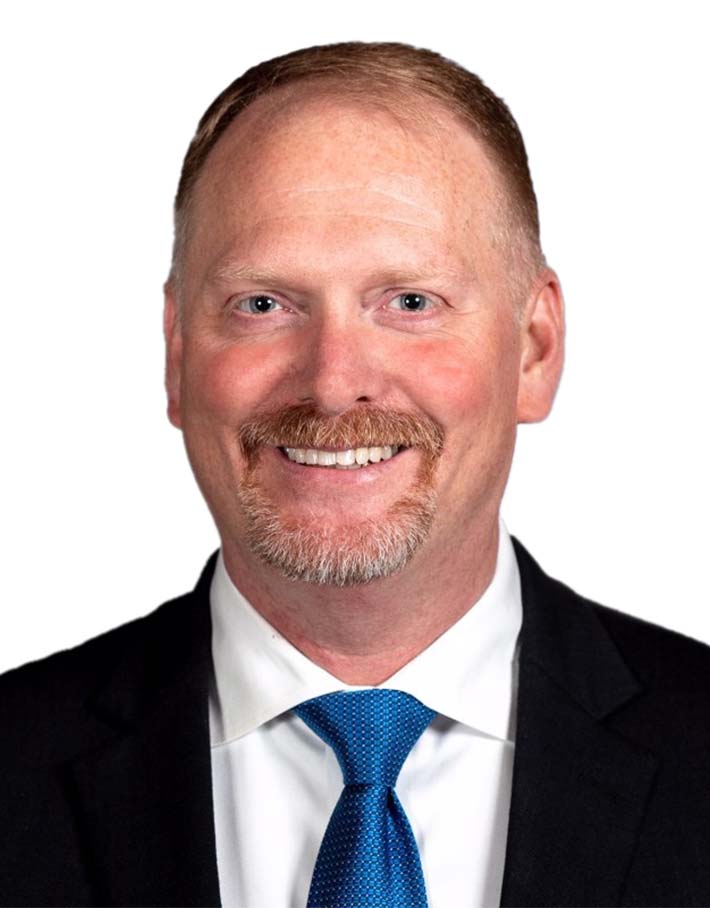Registering a Broker-Dealer: The NMA and CMA Process
By Ed Wegener and Lisa Robinson
Subscribe to our original industry insights
Breaking Down the Registration and CMA Process
In order to become a registered broker-dealer, you must be registered with FINRA. Applying for this membership and navigating the Continuing Membership Application (CMA) process can be challenging. In this episode of Oyster Stew, Ed Wegener sits down with Lisa Robinson, a former senior leader at FINRA and head of FINRA’s Membership and Application group, now a consultant at Oyster. Lisa shares insights into:
- The FINRA membership application process
- When a CMA is necessary and how to determine materiality
- The fast-track application process and how firms can qualify
- Common challenges firms face and how to avoid delays
- Best practices for ensuring a smooth approval process
Whether you’re launching a new broker-dealer or making changes to an existing firm, this episode is packed with expert guidance to help you navigate regulatory requirements efficiently.
Registration Expertise Helps Ensure Success
Oyster Consulting’s registration experts have successfully guided many new broker-dealers through the process, from start-ups to complex organizations. Our team of registration experts will review your business structure, plan and documentation to determine the best approach. We understand how to design practical and reasonable regulatory compliance programs. Take advantage of our experience and let our industry NMA experts turn one of your firm’s toughest challenges into a smooth process.
Listen to the podcast:
Transcript
Transcript provided by TEMI
Libby Hall: Welcome to the Oyster Stew Podcast. I’m Libby Hall, Director of Communications for Oyster Consulting. We receive many, many questions about how to register with FINRA and when a firm needs to submit a continuing membership application or CMA. Today Oyster’s Ed Wegener chats with Lisa Robinson, formerly a senior leader at FINRA and head of FINRA’s Membership and Application group, and who is currently a member of Oyster’s consulting team. Lisa shares her thoughts on fast-track application, when a CMA is necessary, and what to think about before submitting. Ed let’s get started.
Ed Wegener: Well, thank you Libby, and welcome everyone. I’m Ed Wegener. I am a Managing Director at Oyster Consulting, and I also run the Governance, Risk, and Compliance practice at Oyster. Prior to joining Oyster, I spent the bulk of my career at FINRA where I had the pleasure of working with our guest today, Lisa Robinson. Lisa ran FINRA’s Membership Application Group for several years and which is fantastic because that’s going to be the area that we’re going to focus in on today. So thank you for joining us today, Lisa.
Lisa Robinson: Oh, thanks so much for having me, Ed.
Ed Wegener: So, as we mentioned when you joined Oyster, we’re extremely excited to have you on our team. It’s the depth and breadth that you bring in, in terms of this area is extremely beneficial. The membership application process is one of the trickiest things to navigate for any new and existing broker dealer, but it’s something that you have to navigate at times, whether it’s when you first become a broker dealer or if you have some sort of material change that requires an application. And so the depth of experience that you bring regarding this process, I think, is going to be extremely valuable for our clients. So I wonder, just based on that, maybe you could share a little bit about your background and areas of expertise, and how you came to the membership group, and then how you came to Oyster.
Lisa Robinson: Yeah, sure. Happy to. So, I spent, what, 26 years at FINRA? Most recently I was the only Senior Director in the membership application program group. I ran the group for about seven years, and while I was there, I think we made some really good changes to the way FINRA reviews membership applications. In fact, I worked with a great group over in MAP and we developed the fast-track triage process that firms love to talk about, right? Everyone wants their application fast tracked. So you know, that’s something that the team over there and I worked on, and it was a huge success. Prior to joining the MAP team, I worked with FINRA in examinations. I was an associate director, so had a team of examiners back then, they would go on site all the time to member firms. I know now it’s a lot of remote work, but yeah, a lot of good times in the MAP group and it’s really interesting for me to come on this side of things now as a consultant and working with firms, getting their applications ready to submit to FINRA. So it’s been real interesting so far.
Ed Wegener: Well, and that fast-track idea, you know, really kind of aligned with other things that were happening at FINRA regarding a risk-based program, right? So really in the membership process, focusing in on, if there wasn’t a lot of risk to an application or to a material change or a new member coming in, in an area that might not be as risky, you know, taking that into consideration and having those applications move through that process faster because the risk wasn’t present, focusing the bulk of the time on those areas that were more risky. And so it’s really in keeping with the way FINRA and other regulators have been moving in terms of risk. You know, I think one of the things that might be a great place to start is when an application is necessary. It seems like a pretty basic question and it’s pretty self-explanatory for a new member who’s coming in because when you have to file is when you want to become a new member. But also for existing members, who do have to file if there’s a material change. And so I wonder if you can explain generally, because I know it’s very nuanced and there’s a lot of pieces to it. When a firm needs to file, when there’s a material change that would cause a firm to need to file a continuing membership application and other areas that firms might not be thinking of. That hey, we need to file an application that they should be thinking about.
Lisa Robinson: Yeah, that’s really great. There are some changes that automatically require the firm to file a continuing member application, which is a CMA, and one is if you’re adding a business line that requires the firm to have a higher required minimum net capital that’s an automatic CMA, adding market making or underwriting for the first time is an automatic application. Others are if there is a change in ownership with 25% or more, CMA. Asset transfers with certain percentage and dollar amount thresholds are automatic CMAs. A lot of that is found, of course, in the FINRA rules. There’s also a lot of gray area when deciding whether or not a firm is required to file a CMA, and sometimes it’s up to the firm to make the decision whether something is material or not.
And other times it has now become mandatory for firms to file what they call materiality consultations. So again, that’s when a firm isn’t really sure if they need to file. Of course, as a consultant, firms will call me and sometimes ask, Hey, I have this situation, do I need to file? And we’ll pull up the rule and we’ll be like, yes, you do, there you go. But other times you may need to write to FINRA to request that guidance and that information is outlined in FINRA’s notice to member 00-73. It just gives a little more guidance on materiality.
Ed Wegener: I think the takeaway that existing firms should be thinking about and should always keep in the back of your mind, if there’s a change, whether this is going to require an application. For example, if you’re expanding the number of reps or branches that you have, if you exceed a threshold over a certain time period, you need to file. But the pro, the thing is that usually it’s not just one big expansion, right? Sometimes it can be, but sometimes it’s an expansion throughout that time period. And then all of a sudden, you go across that trigger. So making sure you’re being cognizant of that and knowing that, hey, at any point by adding this next rep, have I exceeded that threshold?
Lisa Robinson: Yeah. And there you’re talking about this safe harbor threshold. So there’s certain guidance that FINRA has if you have so many people. FINRA allows you to grow organically in certain amounts, and those numbers are outlined in the rule, but sometimes you’re not really sure if it does trigger an application or not. So, that’s a good chance to give us a call so we could talk through those safe harbor requirements.
Ed Wegener: That’s a good lead into the next piece because I’m sure that every firm that files an application, every firm that’s a client of ours that we’re helping with that process, the big question is – is it going to get approved? And so the question is, what do we need to do in order to get approved? And FINRA, by rule, is required to focus on certain standards, and when they review the application, it’s looking at the change or the new member firm based on those standards. So I wonder if you can give us just a brief explanation of what are the types of standards that they focus on? What should firms be thinking about when they begin this process of needing to file? And, where can they find information about the standards that FINRA’s going to be looking at?
Lisa Robinson: Sure. So the standards of admission are found in FINRA Rule 10-14, and there are 14 of them. And when a firm is thinking about filing an application for their expansion or whatever it may be, the firm should always have in mind that they need to demonstrate that they’ve met each of the standards outlined in the rule. So as we said, there are 14 of them. It goes everywhere from the firm and its person associated. Persons have to have all licenses and registrations. They have to demonstrate that they’re capable of complying with applicable securities laws and regulations. They need to make sure that they have all established contractual and other agreements and business relationships. Communication and operational systems for the purpose of conducting business must be adequate. You need to demonstrate some of those systems to FINRA as part of the application, of course, net capital source of funds.
Lisa Robinson: It’s always follow the money, where’d you get the money from? That’s a really, really big component of any FINRA review, financial controls, supervisory structure and system. One thing, there are a lot of nuances in each of the 14 standards. Some of the things that I stress to clients when they come with regards to licenses and experience. You can’t just have the series 24 and be a CCO as part of an application. You have to have one year direct, or two years related experience. So these are just little nuances, although it’s in the rule. Any firm might not really think about that much, but those are the things that you need to plan for and prepare for before you file that application with FINRA.
Ed Wegener: And a lot of that, along with a lot of FINRA’s rules and regulations, is not super well defined. And I think that’s done intentionally because it allows flexibility, and you can’t be super prescriptive in these areas. Just like we talk about something needs to be reasonable, well, what’s reasonable. That’s not really well defined, but it’s somewhat subjective, but that one year direct experience seems to be understood. But the two years indirect experience and what that means and what qualifies as indirect experience probably is one of the things that we can help firms kind of navigate through based on our experience and looking through these applications. Does the experience that an individual has meet the two years indirect experience?
Lisa Robinson: So it’s the two years related, and you’re exactly right. What I like to do is talk with the client. So you worked at the firm doing these reviews. Does that fit into the related experience category to get you the position you want as part of this application? So it’s having those discussions and seeing how it fits into the rules, because again, you need to demonstrate that all of the standards have been satisfied before FINRA will go ahead and approve you.
Ed Wegener: That makes sense. And, in terms of that process what firms can expect and, the process that FINRA’s going to expect I would anticipate that it’s not too different between a new member and a continuing member. Although with a continuing member, they probably focus more on the specific change that’s being made. But can you talk a little bit about what applicants should expect during that process?
Lisa Robinson: Yeah. And you’re right, the standards are the same, whether it’s a new member application or a continuing member application. So for both, actually, FINRA now would like firms to come in first for a pre-file meeting, and that’s something I always encourage with all of my clients. It’s a great opportunity to be introduced to the FINRA team for the first time, where at least as part of your application, and this way before you even file, FINRA knows what you’re intending. So that’s really great. FINRA, as part of the NMA and even the CMA could request a membership interview, they’ll do that more in CMAs when there are ownership changes. They want to come in and meet the new owners, speak with them, and maybe other new key principles at the firm.
And it’s important for firms to know, it is a very iterative process. So once you hit the submit button on your application, there are some hurdles throughout the process. The first one is the substantially complete assessment, and that’s where FINRA, within that initial 30 days after you hit the submit button, will look at the filing just to make sure that you’ve submitted enough required paperwork for them to begin a meaningful review. So, that’s where I start. Okay, let’s get through this substantially complete assessment and make sure that our application isn’t rejected. It’s a big hurdle, believe it or not. Even when I was over at FINRA, a lot of firms had their applications rejected and, it’s frustrating, it’s stressful. Sometimes firms have to start over all because they weren’t ready. So once you get through that, then it’s really an iterative back and forth. Every 30 days, FINRA sends the firm a letter, and then you, the firm has 30 days to respond. In all by rule FINRA gets 180 days to render a decision. However, if they’re not done with their review, they can and will ask firms for extensions until they’re comfortable with the information provided.
Ed Wegener: You know, we’re going to get to challenges and best practices. But one of the things that you mentioned, seems really beneficial for firms. I think in order to have the best chance of getting the application approved and done in as quickly a time period as possible, it’s important to reduce the number of questions that FINRA’s going to ask. So that pre-filing meeting is so that they understand what they can expect when the application is filed. And putting it into context could possibly reduce the number of questions. By reducing the number of questions, it reduces the amount of back and forth. So I think that it sounds like great advice to take advantage of that pre-filing meeting, especially if your application is going to be by any way complicated. And most applications have some sort of uniqueness and complication to them.
Lisa Robinson: Yeah, I totally agree. And as part of FINRA’s annual conference in the MAP panel, I believe they said, it was upwards of temp firms that came for a pre-file meeting. Their applications were completed. I think it was upwards of 10% faster than those that didn’t. And, I might have the exact percentage wrong, but the message was, go to a pre-file meeting, it helps.
Ed Wegener: Yeah, absolutely. Well, it kind of overcomes some of the challenges that you can face. And what I’d like to turn to next is, having been through this process as it’s evolved at FINRA and seeing applications that went smoothly, applications that had some challenges and then now working with our clients, what are some of the big challenges that you see firms facing as part of this process?
Lisa Robinson: So on both sides, both here as a consultant and there at FINRA, one of the challenges were that individuals just didn’t have the proper licenses, securities licenses, for the roles that they wanted to fill at the firm. FINRA won’t approve your application if the certain people aren’t properly qualified by examination. So a lot of time is spent waiting for individuals to take and pass their exams. So that is a challenge for firms. Just sign up as soon as you can study. Back at FINRA, we would hear all the time firms say, we got this. We’re not worried. We’ll take the exam, we’ll pass. And then they didn’t, and they were like, oh my goodness. So definitely that’s a challenge for some firms. Also, setting realistic timeframes I think is really important. Not everything is fast tracked. We talked about earlier, fast track is for the less complex low risk. You’re not changing everything at your broker dealer type applications. And there aren’t as many applications that are fast tracked as people may think. Going in with the expectation that your application’s going to be done in 30 or 60 days may not be realisti,c depending on what your proposal is.
Ed Wegener: Yeah. And I think that’s very important because, you know, to that extent a lot of the things that you’re working with and a lot of things that are drivers in terms of how long that process is going to take, is outside of your control, right? It’s the person working on and how quickly that person can get to it at FINRA, right? And you can’t, that’s control. That’s, and also just, how well they can comprehend the change, especially if there’s some complication or uniqueness, because to your point earlier, their responsibility is to make sure they’re comfortable that whatever change meets those standards. And if you’re bringing in a new type of business or a technology that’s going to be dependent on or something that’s going to cause them to say, Hey, we really need to understand this, that’s going to take some time.
And so understanding that that time is going to exist and really focusing in on, how do you shorten that? Well, you make sure that you explain those things upfront, that you’re clear in your explanations that if FINRA thinks that something’s not being supplied to them, or there’s information that they don’t know about, they’re really going to dig in and ask a lot of questions and ask questions about those answers that you give. And so all of that is going to take time. I want to focus on a couple of the things that you mentioned earlier that I know have been complications for clients when they come in, especially existing clients that are engaging in a new business or going through a merger or something like that, that’s going to cause it, and that’s source of funds and contractual arrangements, right? So one of the things is when you said that they follow the money, they follow the money fairly deeply, and it’s important to make sure that you’re giving them the information that they’re going to need and knowing what that is upfront so they don’t have to ask and ask and ask for it. And then with the contractual arrangements, having that stuff done and available and ready to go before you file.
Lisa Robinson: Yeah. Both are super, super important. Source of funding when I was at FINRA was always a big, big hold up for firms. You know, they didn’t understand why they had to give bank statements, but it’s required. And it’s not just one bank statement, it’s three months prior bank statements and they do go back and follow the money. So understanding that, working with us to make sure that you give the right information for source of funds with regard to contractual agreements, it’s great. FINRA will take drafts which is super helpful as long as those drafts don’t substantially change. And if they do, then you would need to update that with FINRA. But drafts are good. So things like that are really helpful to know and helps you prepare for filing that application.
Ed Wegener: You know, an experience that I had, because you mentioned changes throughout the application period is, if your business plan changes to any material expense during the application process, it’s almost like resetting and starting from scratch. Which can be very time consuming. So make sure you have your business plan set before you file.
Lisa Robinson: That’s right. There could be like little minor changes, things are fluid in life, but if you’re changing key personnel or changing vendors, banks, things, or business, you can’t. Once you’re a hundred days in, you can’t say, hey, I think I want to do self-clearing now. It’s just not going to happen. <Laugh>. So be prepared.
Ed Wegener: Well, given all those challenges, I think having you in a role like this is terrific because really what our clients look for are, what are the things that can help, what are the things that are going to cause the application to have a higher probability that it’s going to get accepted and approved and do so in the most efficient manner. So what would you suggest, what are some common things that you’ve seen that have been really beneficial in terms of increasing the probability of approval and keeping the timeframes manageable?
Lisa Robinson: One of them I mentioned is, that pre-file meeting is really super helpful. And what we do here at Oyster is break down the applications into phases. So the phase one piece is gathering all the documentation and information that will be required to be submitted as part of the application. I work very closely with firms to make sure that they have all the right documents, the right organizational charts, the right bank statements, all that stuff. And we draft a very detailed business plan, and each business plan is crafted specifically for your business model. We don’t just cut and paste because every firm is different. Every business proposal, every change is unique to your firm. So we spend a lot of time in that phase one just making sure we have everything ready before we hit that submit button.
Ed Wegener: And that’s critical because, as we talk about earlier, what you want to do that’s under your control is to try to limit the number of questions that FINRA’s going to ask. So having that tailored, detailed business plan that anticipates the questions that FINRA’s going to ask and answers them upfront is going to make it much less likely that they’re going to have to ask multiple questions that you can answer upfront and reduce that back and forth time. You know, that sounds extremely helpful. And the fact that the approach that we take, and I think is a little bit different of an approach than we may have taken in the past, has been really helpful with these two phases, is everything that you’ve mentioned. The success of the application is how well prepared it is before the filing happens.
Ed Wegener: And so by focusing on all of that upfront in that first phase the more likely that application’s going to be successful, and that phase one can be different depending on where in the evolution of that the client is. So the client might be, Hey, we’ve just started thinking of this and we still have to formulate what it is we need and get all those contractual arrangements together and all of that. And that might take some more time. Or a firm might come to us and say, hey, we’ve got a really well-defined business plan. We’ve got things ready to go, we just need to finalize them. But it’s still important to run through all that to make sure that the business plan is really tailored and set up for success.
Lisa Robinson: Yeah. You mentioned early, this application process is not all in the firm’s control. So FINRA gets 30 days before they need to send out another letter. Sometimes FINRA waits till the 29th day. So you, the firm, can’t control that, but the firm can control what they provide to FINRA and being as transparent as possible and making sure we give them what they need timely and as completely as possible just to make the process more efficient. The sooner we respond, the sooner it gets back to FINRA and that all shortens the timeframe. So it’s really important.
Ed Wegener: Well, that makes a lot of sense. And if this sounds like a pretty difficult and challenging process, it’s because it is, and I think that the value that you add, Lisa, to a client going through this is immeasurable. And the reason why it’s complicated and challenging, and they ask for a lot of information is because, as we can all understand and I think appreciate, FINRA wants to make sure before letting firms into the club, before approving them for business, that they’re comfortable that this is a firm that’s not going to be a significant risk to investors or a firm that FINRA’s going to have to spend a ton of time dealing with after they approve it. So it’s really important for them to do that front end due diligence, which this is really a due diligence process.
Lisa Robinson: Yeah. When I was over at MAP where, and even publicly, we’re referred to as the gatekeeper to the broker dealer industry. So working with myself and other experts here at Oyster, we just make the process go more smoothly for you.
Ed Wegener: And, you mentioned experts and one of the things that I’ve seen kind of getting back to some of the challenges and things to be prepared for is, because the industry has become much more complicated and technology driven and the rules have become pretty challenging, FINRA will often bring in subject matter experts to opine on their end. So for example, what I’ve seen is if you’re technology dependent in any respect, they tend to bring in the cybersecurity group to go over your cybersecurity program. So it’s not just a generalist examiner who’s asking questions about this. This is somebody who really understands that area and is going to dig pretty deep.
Lisa Robinson: Yeah, that’s exactly right. FINRA’s a big company. They’ve got all these different departments and the MAP group will reach out to whatever department they need to, that specializes in whatever area the firm’s business is going to engage in. And it’s important for the firm too, to have the right people either on the phone or on video when you’re speaking with FINRA as part of an application. The experts speaking with the experts. And it just makes, again, it just makes the process more efficient when the right people are in the room.
Ed Wegener: Well, Lisa, this has been extremely helpful. Again, we’re really excited to have you here and hopefully, if you’re interested and willing, we’d love to have you back to talk probably more deeply in any one of these areas. I think it’d be really beneficial and interesting. So thank you very much.
Lisa Robinson: Sure. Would love to. Thank you, Ed.
Libby Hall: Thanks everyone for listening. If you’d like to learn more about our experts and how Oyster can help your firm, visit our website@oysterllc.com. And if you like what you heard today, follow us on whatever platform you listen to and give us a review. Reviews make it easier for people to find us. Have a great day.





